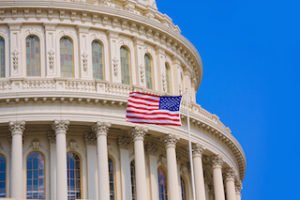• Editor’s Note: The following commentary about the DOL’s fiduciary rule proposal was distributed on Oct. 5, and is attributed to SIFMA President & CEO Kenneth E. Bentsen Jr.; Financial Services Institute, Inc. President & CEO Dale E. Brown, CAE; American Bankers Association President and CEO Frank Keating; American Council of Life Insurers President & CEO Dirk A. Kempthorne; and Financial Services Roundtable President & CEO Tim Pawlenty.
Is President Barack Obama’s administration serious about considering feedback in response to its proposed regulation to change the way Americans, especially low- and moderate-income Americans, are informed and educated about retirement planning?
If so, why would it tell members of Congress that the draft regulation would not be re-proposed — even before public hearings were held or before all written comments were submitted before the Sept. 24 deadline?
Building a big table for discussion is a good idea. Discussions are the most meaningful if useful suggestions are considered and the dialogue is truly constructive. Before issuing a final regulation, the administration should take a fair, transparent and common-sense approach, make the substantive changes it claims it will, then issue a proposal that the public can review and comment on. Changes are sorely needed to avoid leaving low- and moderate-income Americans without the education and advice they want and need.
When the U.S. Department of Labor first proposed a “fiduciary regulation” in 2010, it received more than 200 comments. The department wanted to get it right, so it withdrew the proposal. So far, more than 2,000 commenters have registered their opinions or analysis of this complex proposal. Most of the substantive comments from regulators, academics, employers and retirement-plan sponsors say the administration still did not get it right.
The department should restart the process by being clear about the proposed regulation’s substantial, adverse impact on savers and account for the extensive laws and processes that already punish people and firms for failing to act in their customer’s interest. Financial professionals will not be in business very long if their customers’ needs aren’t met.
Among the proposed regulation’s many flaws is that in another 2010 initiative, the department relied on estimates that financial losses associated with the lack of advice would amount to $114 billion for that year alone. Yet, its 2015 proposed fiduciary regulation will make investment advice less available and limit what a financial professional may recommend. Won’t this result in more consumer financial losses?
Even more confusing is the White House Council of Economic Advisers claiming the proposed regulation will save consumers $17 billion. The Labor Department officially justifies the proposed rule using a $4 billion figure. What happened to the $13 billion difference? But, even the $4 billion is highly questionable given the department’s 2010 data regarding financial losses associated with lost access to financial guidance. More important — and as is required to propose a substantial change in the law — the department does not provide actual empirical data indicating harm to investors.
That failure included no economic analysis of the impact its proposed regulation would have on annuities and the ability of savers to access them. Annuities represent the sole financial product in the marketplace that guarantees lifetime income. They provide peace of mind and financial security to millions of retirees today as they supplement Social Security. By sidelining so many financial professionals from offering annuities, there is a risk annuities will be out of reach of millions of retirees in the future.
In addition, the administration should reconsider its analogy to the medical profession, in which administration officials say financial professionals should act like doctors. Here’s why: Not every medical professional must be a doctor. Under the department’s thinking, your local EMT, firefighter, police officer, nurse — anyone who might provide medical assistance — would have to be a doctor. This would drive up the cost of education and advice and make it inaccessible to many low- and moderate-income Americans. It just doesn’t make sense.
The department should take the time to make the necessary changes so that the proposal doesn’t create a retirement “advice gap” in America similar to what has happened in the United Kingdom with its own version of a fiduciary rule.
Some 10,000 baby boomers will turn 65 every day until 2030. They want and need help planning for retirements that can last 10 years, 20 years or more. They deserve smart, sound public policy — not regulation that was rushed to meet artificial deadlines. We stand ready to work with the Department of Labor to “fix” this flawed proposed regulation. We also stand prepared to fight for middle- and low-income Americans — so they have access to the retirement advice they need.
Kenneth E. Bentsen Jr. is president & CEO, SIFMA; Dale E. Brown, CAE, is president & CEO, Financial Services Institute, Inc.; Frank Keating is president and CEO, American Bankers Association; Dirk A. Kempthorne is president & CEO, American Council of Life Insurers; and Tim Pawlenty is president & CEO, Financial Services Roundtable.













